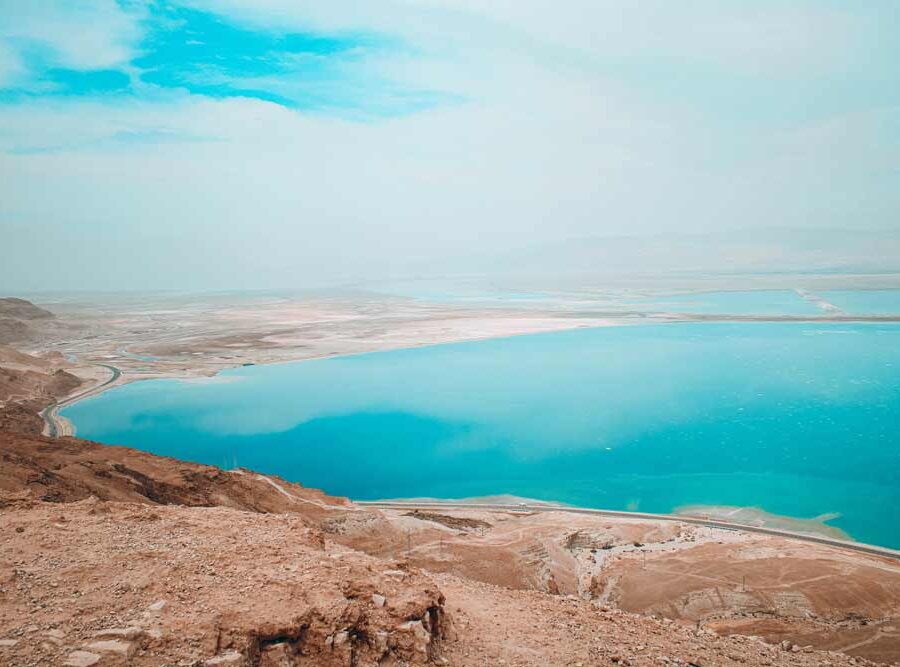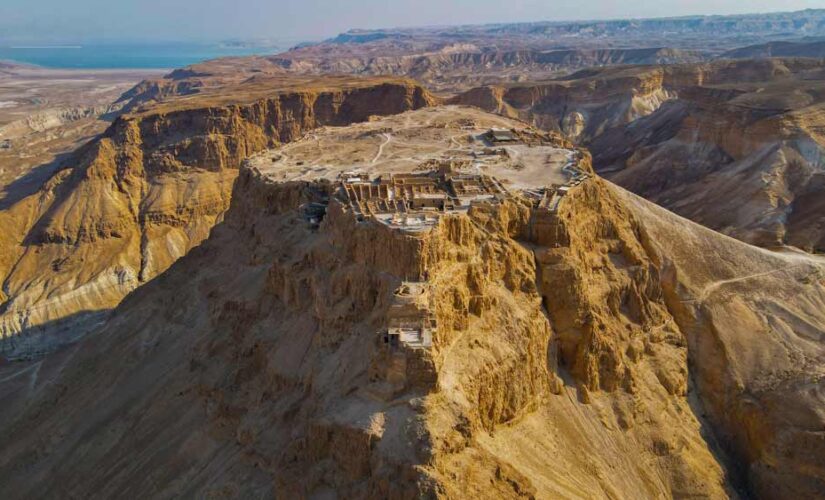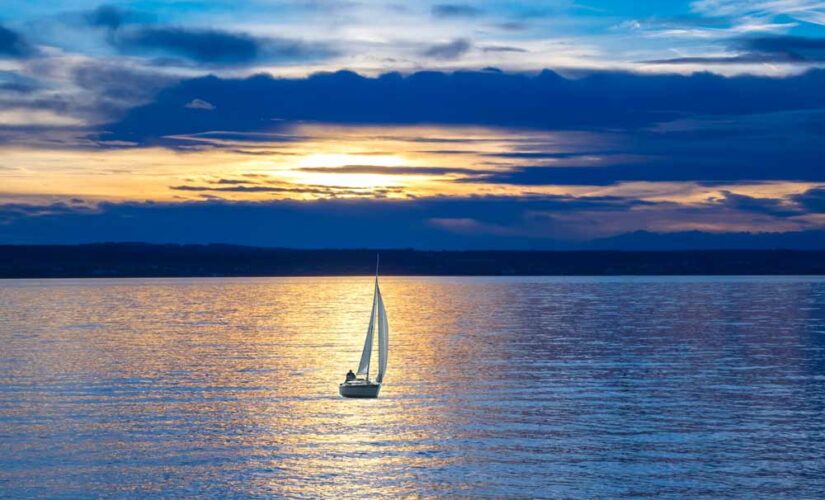Israel is blessed to have ~300 days of sunshine a year. In fact, with so…
#41 The Dead Sea

The Dead Sea, located between Jordan and Israel, is a salt lake that is famous for its therapeutic properties. The Dead Sea is one of the saltiest bodies of water in the world, with a salt concentration that is ten times saltier than ordinary seawater. Due to its unique combination of minerals, the Dead Sea has been used for centuries as a natural healing and therapeutic resource.
One of the most notable benefits of the Dead Sea is its ability to help treat skin conditions such as psoriasis and eczema. The high concentration of minerals in the water, including magnesium, potassium, and calcium, is known to have a therapeutic effect on the skin, helping to soothe and hydrate the skin, reduce inflammation, and promote healing. Additionally, the mud from the Dead Sea is often used as a natural exfoliant and skin treatment, helping to remove dead skin cells and improve the appearance of the skin.
Another benefit of the Dead Sea is its ability to help relieve stress and improve mental health. The therapeutic properties of the Dead Sea have been shown to help reduce stress and anxiety, improve sleep quality, and enhance overall mental wellbeing. Spending time at the Dead Sea, whether by swimming in the water or lounging on the shore, can be a powerful way to de-stress and rejuvenate.
The Dead Sea is also beneficial for overall physical health. The high concentration of minerals in the water is known to help improve circulation, strengthen bones, and boost the immune system. Additionally, the buoyancy of the water, due to its high salt content, can help to reduce joint and muscle pain, making it a popular destination for those with arthritis and other musculoskeletal conditions.
The Dead Sea offers a number of significant benefits for physical and mental health. From its ability to help treat skin conditions and relieve stress, to its potential to improve overall physical health, the Dead Sea is a unique and powerful resource for anyone looking to improve their wellbeing. Whether you’re looking for a natural way to soothe skin irritations, relieve stress, or simply relax and rejuvenate, the Dead Sea is a destination worth exploring.
The lake’s surface is 430.5 meters (1,412 ft) below sea level, making its shores the lowest land-based elevation on Earth. It is 304 m (997 ft) deep, the deepest hypersaline lake in the world. With a salinity of 342 g/kg, or 34.2% (in 2011), it is one of the world’s saltiest bodies of water – 9.6 times as salty as the ocean – and has a density of 1.24 kg/liter, which makes swimming similar to floating. This salinity makes for a harsh environment in which plants and animals cannot flourish, hence its name. The Dead Sea’s main, northern basin is 50 kilometers (31 miles) long and 15 kilometers (9 miles) wide at its widest point.
The Dead Sea has attracted visitors from around the Mediterranean Basin for thousands of years. It was one of the world’s first health resorts (for Herod the Great), and it has been the supplier of a wide variety of products, from asphalt for Egyptian mummification to potash for fertilizers. Today, tourists visit the sea on its Israeli, Jordanian and West Bank coastlines. The Palestinian tourism industry has been met with setbacks in developing along the West Bank coast.
The Dead Sea is receding at a swift rate; its surface area today is 605 km2 (234 sq mi), having been 1,050 km2 (410 sq mi) in 1930. The recession of the Dead Sea has begun causing problems, and multiple canal and pipeline proposals, such as the scrapped Red Sea–Dead Sea Water Conveyance project, have been made to reduce its recession.
The Dead Sea area has become a location for health research and potential treatment for several reasons. The mineral content of the water, the low content of pollens and other allergens in the atmosphere, the reduced ultraviolet component of solar radiation, and the higher atmospheric pressure at this great depth each may have specific health effects. For example, persons experiencing reduced respiratory function from diseases such as cystic fibrosis seem to benefit from the increased atmospheric pressure.
The region’s climate and low elevation have made it a popular center for assessment of putative therapies:
- Climatotherapy: Treatment which exploits local climatic features such as temperature, humidity, sunshine, barometric pressure and special atmospheric constituents
- Heliotherapy: Treatment that exploits the biological effects of the sun’s radiation
- Thalassotherapy: Treatment that exploits bathing in Dead Sea water
Climatotherapy at the Dead Sea may be a therapy for psoriasis by sunbathing for long periods in the area due to its position below sea level and subsequent result that UV rays are partially blocked by the increased thickness of the atmosphere over the Dead Sea.
Rhinosinusitis patients receiving Dead Sea saline nasal irrigation exhibited improved symptom relief compared to standard hypertonic saline spray in one study.
Dead Sea mud pack therapy has been suggested to temporarily relieve pain in patients with osteoarthritis of the knees. According to researchers of the Ben Gurion University of the Negev, treatment with mineral-rich mud compresses can be used to augment conventional medical therapy.



